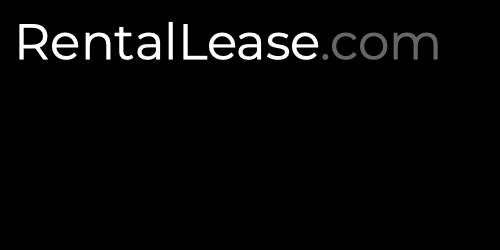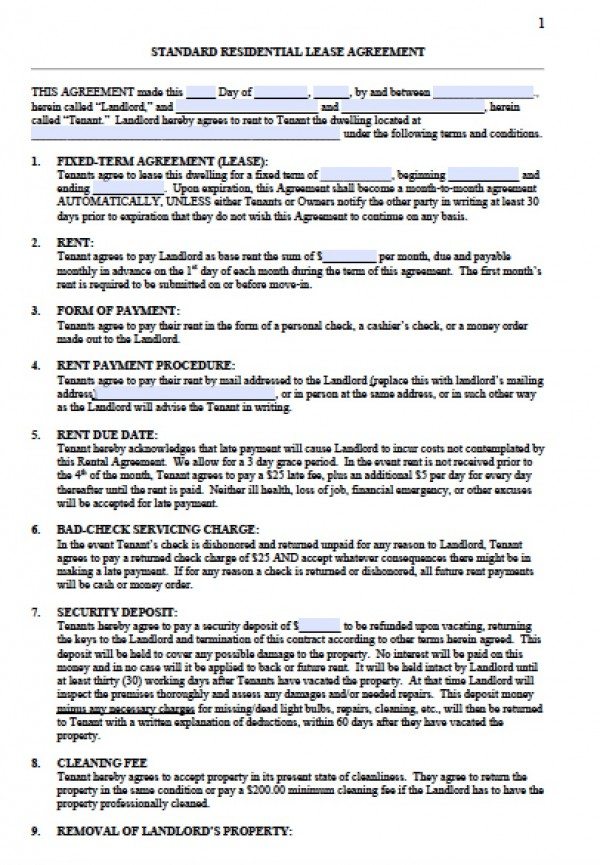A standard residential lease agreement is typically a one (1) year term, or any fixed time period, that establishes a relationship where a person pays rent (the “Tenant”) to a property owner (the “Landlord”) in return for occupying the property. After the tenant shows interest, the landlord will typically ask to see their credentials and background information by completing a Rental Application.
Sample Templates – PDF & Word
- Template 1 (PDF) – PrestigeTitle.com (source)
- Template 2 (PDF) – TheLPA (source)
- Template 3 (PDF) – RentPrep (source)
- Template 4 (Word) – RentalsOnline (source)
- Template 5 (PDF) – WonderShare (source)
By State
- Alabama
- Alaska
- Arizona
- Arkansas
- California
- Colorado
- Connecticut
- Delaware
- Florida
- Georgia
- Hawaii
- Idaho
- Illinois
- Indiana
- Iowa
- Kansas
- Kentucky
- Louisiana
- Maine
- Maryland
- Massachusetts
- Michigan
- Minnesota
- Mississippi
- Missouri
- Montana
- Nebraska
- Nevada
- New Hampshire
- New Jersey
- New Mexico
- New York
- North Carolina
- North Dakota
- Ohio
- Oklahoma
- Oregon
- Pennsylvania
- Rhode Island
- South Carolina
- South Dakota
- Tennessee
- Texas
- Utah
- Vermont
- Virginia
- Washington (state)
- West Virginia
- Wisconsin
- Wyoming
What is a Residential Lease?
A residential lease is a legal document that allows a landlord to enter into a legally binding arrangement with a tenant. No matter the lease type, the tenant will be responsible for the payment of rent on a timely basis. Depending on what is written in the residential lease, the landlord may have their own responsibilities to uphold during the course of the term such as maintenance, upkeep of outside grounds, and utilities. A lease is binding in all 50 States by signature of the landlord and tenant, no witnesses or notary public required.
How to Write
Step 1 – Download the document in Adobe PDF or Microsoft Word (.doc).
Step 2 – Parties –
- Enter the date of commencement of the agreement in dd/mm/yyyy format
- Provide the landlord’s name
- Provide the tenant’s name
- Submit the complete address of the premises
Step 3 – Fixed Term (Lease) Information – Submit:
- The beginning and ending dates of the lease in mm/dd/yyyy format
Step 4 – Rent –
- Landlord must enter the sum of the rental payment due each month
- Read the statement regarding the form of payment to be made
Rent Payment Procedure –
- The landlord must enter either a mailing location or local address where rent must be delivered each month
- Read the “Rent Due Date” statement
- Review the “Bad Check” service charge information
Security Deposit –
- The landlord must enter the amount of the security deposit due on signing of the document and read the remainder of the section
Step 5 – Titled Sections –
- Tenant(s) and Landlord(s) must carefully review the following sections prior to signing the document, as follows:
- Cleaning Fee
- Removal of Landlord’s Property
- Changes in Terms of Tenancy
- Tenant Cooperation ‘
- Tenant Insurance
- Abandonment
- Occupants – (Landlord must enter the limited number of added tenants and the number of primary tenants)
- Lock Policy
- Lockouts – (landlord must enter the fee due in the event of a lock out – if any)
- Condition of Premises
- Inventory and Inspection Record
- Balconies and Porches
- Tenant Responsibility
- Alteration
- Vehicles and Garage Use
- Utilities
- Services
- Notification of Serious Building Problems
- Reasonable Time for Repairs
- Drain Stoppages
- Back Yard Gardens
- Non-Liability
- Disclosure of Landlord/Agent –(Landlord must enter the name of the management company (if any) – Again enter the name of the management company stating authorization to act – Enter the physical address of the management company)
- Access to Premises
- Subletting and Assignment
- Pets
- Termination Upon Sale of Premises
- Waiver
- Terms
- Full Disclosure
Step 6 – Signatures – Once read and agreed by all parties, provide:
- The date of acceptance in dd/m/yy format
- Tenant(s) signature(s)
- Date signatures in mm/dd/yyyy format
- AND
- Landlord/Manager’s signature
- Date signature in mm/dd/yyyy format

